

Dada (/?d??d??/) or Dadaism was an art movement of the European avant-garde in the early 20th century, with early centers in Zürich, Switzerland, at the Cabaret Voltaire (circa 1916); New York Dada began circa 1915, and after 1920 Dada flourished in Paris. Developed in reaction to World War I, the Dada movement consisted of artists who rejected the logic, reason, and aestheticism of modern capitalist society, instead expressing nonsense, irrationality, and anti-bourgeois protest in their works. The art of the movement spanned visual, literary, and sound media, including collage, sound poetry, cut-up writing, and sculpture. Dadaist artists expressed their discontent with violence, war, and nationalism, and maintained political affinities with the radical left.
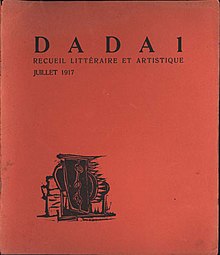
There is no consensus on the origin of the movement's name; a common story is that the German artist Richard Huelsenbeck plunged a knife at random into a dictionary, where it landed on "dada", a colloquial French term for a hobby horse. Others note that it suggests the first words of a child, evoking a childishness and absurdity that appealed to the group. Still others speculate that the word might have been chosen to evoke a similar meaning (or no meaning at all) in any language, reflecting the movement's internationalism.
The roots of Dada lie in pre-war avant-garde. The term anti-art, a precursor to Dada, was coined by Marcel Duchamp around 1913 to characterize works which challenge accepted definitions of art. Cubism and the development of collage and abstract art would inform the movement's detachment from the constraints of reality and convention. The work of French poets, Italian Futurists and the German Expressionists would influence Dada's rejection of the tight correlation between words and meaning. Works such as Ubu Roi (1896) by Alfred Jarry, and the ballet Parade (1916–17) by Erik Satie would also be characterized as proto-Dadaist works. The Dada movement's principles were first collected in Hugo Ball's Dada Manifesto in 1916.
The Dadaist movement included public gatherings, demonstrations, and publication of art/literary journals; passionate coverage of art, politics, and culture were topics often discussed in a variety of media. Key figures in the movement included Hugo Ball, Marcel Duchamp, Emmy Hennings, Hans Arp, Raoul Hausmann, Hannah Höch, Johannes Baader, Tristan Tzara, Francis Picabia, Huelsenbeck, George Grosz, John Heartfield, Man Ray, Beatrice Wood, Kurt Schwitters, Hans Richter, Max Ernst, and Elsa von Freytag-Loringhoven among others. The movement influenced later styles like the avant-garde and downtown music movements, and groups including Surrealism, nouveau réalisme, pop art and Fluxus.
Contents
Overview
Dada was an informal international movement, with participants in Europe and North America. The beginnings of Dada correspond to the outbreak of World War I. For many participants, the movement was a protest against the bourgeois nationalist and colonialist interests, which many Dadaists believed were the root cause of the war, and against the cultural and intellectual conformity—in art and more broadly in society—that corresponded to the war.
Avant-garde circles outside France knew of pre-war Parisian developments. They had seen (or participated in) Cubist exhibitions held at Galeries Dalmau, Barcelona (1912), Galerie Der Sturm in Berlin (1912), the Armory Show in New York (1913), SVU Mánes in Prague (1914), several Jack of Diamonds exhibitions in Moscow and at De Moderne Kunstkring, Amsterdam (between 1911 and 1915). Futurism developed in response to the work of various artists. Dada subsequently combined these approaches.
Many Dadaists believed that the 'reason' and 'logic' of bourgeois capitalist society had led people into war. They expressed their rejection of that ideology in artistic expression that appeared to reject logic and embrace chaos and irrationality. For example, George Grosz later recalled that his Dadaist art was intended as a protest "against this world of mutual destruction."
According to Hans Richter Dada was not art: it was "anti-art." Dada represented the opposite of everything which art stood for. Where art was concerned with traditional aesthetics, Dada ignored aesthetics. If art was to appeal to sensibilities, Dada was intended to offend.
As Hugo Ball expressed it, "For us, art is not an end in itself ... but it is an opportunity for the true perception and criticism of the times we live in."
A reviewer from the American Art News stated at the time that "Dada philosophy is the sickest, most paralyzing and most destructive thing that has ever originated from the brain of man." Art historians have described Dada as being, in large part, a "reaction to what many of these artists saw as nothing more than an insane spectacle of collective homicide."
Years later, Dada artists described the movement as "a phenomenon bursting forth in the midst of the postwar economic and moral crisis, a savior, a monster, which would lay waste to everything in its path... a systematic work of destruction and demoralization... In the end it became nothing but an act of sacrilege."
To quote Dona Budd's The Language of Art Knowledge,
Dada was born out of negative reaction to the horrors of the First World War. This international movement was begun by a group of artists and poets associated with the Cabaret Voltaire in Zürich. Dada rejected reason and logic, prizing nonsense, irrationality and intuition. The origin of the name Dada is unclear; some believe that it is a nonsensical word. Others maintain that it originates from the Romanian artists Tristan Tzara's and Marcel Janco's frequent use of the words "da, da," meaning "yes, yes" in the Romanian language. Another theory says that the name "Dada" came during a meeting of the group when a paper knife stuck into a French–German dictionary happened to point to 'dada', a French word for 'hobbyhorse'.
The movement primarily involved visual arts, literature, poetry, art manifestos, art theory, theatre, and graphic design, and concentrated its anti-war politics through a rejection of the prevailing standards in art through anti-art cultural works.
History
Zürich
In 1916, Hugo Ball, Emmy Hennings, Tristan Tzara, Jean Arp, Marcel Janco, Richard Huelsenbeck, Sophie Taeuber, and Hans Richter, along with others, discussed art and put on performances in the Cabaret Voltaire expressing their disgust with the war and the interests that inspired it.
Some sources state that Dada coalesced on October 6 at the Cabaret Voltaire. Other sources state that Dada did not originate fully in a Zürich literary salon but grew out of an already vibrant artistic tradition in Eastern Europe, particularly Romania, that transposed to Switzerland when a group of Jewish modernist artists (Tzara, Janco, Arthur Segal, and others) settled in Zürich. In the years prior to the First World War similar art had already risen in Bucharest and other Eastern European cities; it is likely that Dada's catalyst was the arrival in Zürich of artists like Tzara and Janco.
Having left Germany and Romania during the Great War, the artists found themselves in Switzerland, a country recognized for its neutrality. Inside this space of political neutrality they decided to use abstraction to fight against the social, political, and cultural ideas of that time. The Dadaists believed those ideas to be a byproduct of bourgeois society, a society so apathetic it would rather fight a war against itself than challenge the status quo.
Janco recalled, "We had lost confidence in our culture. Everything had to be demolished. We would begin again after the tabula rasa. At the Cabaret Voltaire we began by shocking common sense, public opinion, education, institutions, museums, good taste, in short, the whole prevailing order."
The Cabaret closed its doors in early July and then at the first public soirée at Waag Hall on July 14, 1916, Ball recited the first manifesto. In 1917, Tzara wrote a second Dada manifesto considered one of the most important Dada writings, which was published in 1918. Other manifestos followed.
A single issue of the magazine Cabaret Voltaire was the first publication to come out of the movement.
After the cabaret closed down, Dada activities moved on to a new gallery, and Hugo Ball left for Bern. Tzara began a relentless campaign to spread Dada ideas. He bombarded French and Italian artists and writers with letters, and soon emerged as the Dada leader and master strategist. The Cabaret Voltaire re-opened, and is still in the same place at the Spiegelgasse 1 in the Niederdorf.
Zürich Dada, with Tzara at the helm, published the art and literature review Dada beginning in July 1917, with five editions from Zürich and the final two from Paris.
Other artists, such as André Breton and Philippe Soupault, created “literature groups to help extend the influence of Dada.”
After the fighting of the First World War had ended in the armistice of November 1918, most of the Zürich Dadaists returned to their home countries, and some began Dada activities in other cities. Others, such as the Swiss native Sophie Taeuber, would remain in Zürich into the 1920s.
Berlin
"Berlin was a city of tightened stomachers, of mounting, thundering hunger, where hidden rage was transformed into a boundless money lust, and men's minds were concentrating more and more on questions of naked existence... Fear was in everybody's bones "- Richard Hülsenbeck
The groups in Germany were not as strongly anti-art as other groups. Their activity and art were more political and social, with corrosive manifestos and propaganda, satire, public demonstrations and overt political activities. The intensely political and war-torn environment of Berlin had a dramatic impact on the ideas of Berlin Dadaists. Conversely, New York's geographic distance from the war spawned its more theoretically-driven, less political nature.
In February 1918, while the Great War was approaching its climax, Huelsenbeck gave his first Dada speech in Berlin, and he produced a Dada manifesto later in the year. Following the October Revolution in Russia, by then out of the war, Hannah Höch and George Grosz used Dada to express communist sympathies. Grosz, together with John Heartfield, Höch and Hausmann developed the technique of photomontage during this period.
After the war, the artists published a series of short-lived political magazines and held the First International Dada Fair, 'the greatest project yet conceived by the Berlin Dadaists', in the summer of 1920. As well as work by the main members of Berlin Dada – Grosz, Raoul Hausmann, Hannah Höch, Johannes Baader, Huelsenbeck and Heartfield – the exhibition also included the work of Otto Dix, Francis Picabia, Jean Arp, Max Ernst, Rudolf Schlichter, Johannes Baargeld and others. In all, over 200 works were exhibited, surrounded by incendiary slogans, some of which also ended up written on the walls of the Nazi's Entartete Kunst exhibition in 1937. Despite high ticket prices, the exhibition lost money, with only one recorded sale.[22]
The Berlin group published periodicals such as Club Dada, Der Dada, Everyman His Own Football, and Dada Almanach.
Cologne
In Cologne, Ernst, Baargeld, and Arp launched a controversial Dada exhibition in 1920 which focused on nonsense and anti-bourgeois sentiments. Cologne's Early Spring Exhibition was set up in a pub, a
Watch movie Dada online on Amazon
Watch movie Dada online
Watch The Movie On PrimeNigahen Full HD Movie Download
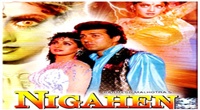
Aaja Meri Jaan Full HD Movie Download
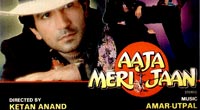
The Boss - Of The Underworld Full HD Movie Download

Zulm Ki Zanjeer Full HD Movie Download

Meri Biwi Ka Jawab Nahin Full HD Movie Download

Alag Alag Full HD Movie Download
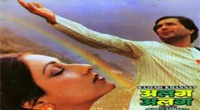
Baat Ek Raat Ke Full HD Movie Download
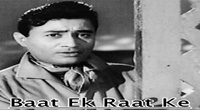
Apna Desh Full HD Movie Download

Pet Pyar Aur Paap Full HD Movie Download
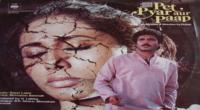
Pyar Ka Sapna Full HD Movie Download
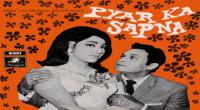
Ardhangini Full HD Movie Download
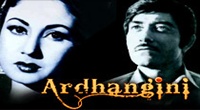
Baap Numbari Beta Dus Numbari Full HD Movie Download
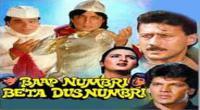
Veerta Full HD Movie Download
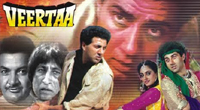
Aagey Se Right Full HD Movie Download
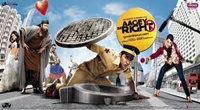
Sindoor (1987) Full HD Movie Download
.jpg)
Yash (1996) Full HD Movie Download
.jpg)
Yalgaar Full HD Movie Download
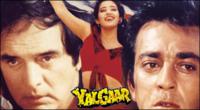
Abohomaan Full HD Movie Download
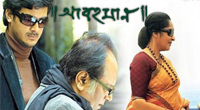
Yamapasam Full HD Movie Download
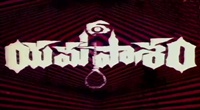
Maher Majhe He Pandharpur Full HD Movie Download
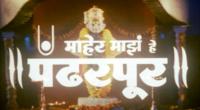
Prema Kavyam Full HD Movie Download
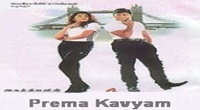
Download latest Movie from bollywood
- 1> baaghi 3
- 2> THE SKY IS PINK MOVIE FULL STORY AND REVIEW
- 3> Luka Chuppi
- 4> TO ALL THE BOYS I’VE LOVED BEFORE
- 5> Kabir Singh
- 6> Street Dancer 3D
- 7> Simmba
- 8> Gone Girl
- 9> The Girl Who Lived
- 10> Ludo
- 11> DILWALE DULHANIA LE JAYENGE
- 12> GUILTY
- 13> The Godfather
- 14> Adventures of Rusty
- 15> Sooryavanshi
- 16> Satyameva Jayate 2
- 17> Thappad
- 18> Bhool Bhulaiyaa 2
- 19> KGFChapter 2
- 20> Mardaani 2
- 21> Pinjar
- 22> Shivaji maharaj
- 23> Ek Villian 2
- 24> Hungama 2
- 25> Divergent
- 26> Mumbai Saga
- 27> The Internship
- 28> HIT (telugu)
- 29> Panga
- 30> The perfect date
- 31> 16 December
- 32> Gopala Gopala (Telugu)
- 33> Brahmastra
- 34> Gangubai Kathiawadi
- 35> Manmadhudu
- 36> Nenu local
- 37> Mahanati
- 38> Shatamanam bavathi
- 39> Lagaan
- 40> After
- 41> MOM
- 42> Shamshera
- 43> Raguvaran BTech
- 44> Khakee
- 45> The villain
- 46> OM
- 47> Mr. perfect
- 48> Bueatifull mind
- 49> Hichki
- 50> Gabbar Singh
- 51> Jogi
- 52> Before Sunrise
- 53> Before Sunset
- 54> Before Midnight
- 55> The Big Bull
- 56> Top Gun: Maverick
- 57> The Purge
- 58> The Sky is Pink
- 59> Laxmmi Bomb
- 60> Sadak 2
- 61> Sufna
- 62> Prithviraj
- 63> PK
- 64> Coolie No 1(2020)
- 65> Black Widow
- 66> Dear Zindagi
- 67> Dil Bechara
- 68> PHIR HERA PHERI
- 69> WAR
- 70> Dostana
- 71> RRR: Roudram Ranam Rudhiram
- 72> Maidan
- 73> Dabbang 3
- 74> Chhalaang
- 75> life as we know it
- 76> SherShaah
- 77> Sandeep Aur Pinky Faraar
- 78> Event Horizon
- 79> 83
- 80> Radhe: Your Most Wanted Bhai
- 81> Gunjan Saxena: The Kargil Girl
- 82> Mr India
- 83> Vivah
- 84> Anokha Bandhan
- 85> Ghost
- 86> Bhoot: Part One - The Haunted Ship
- 87> Haseen Dilruba
- 88> Laal Singh Chaddha
- 89> Qismat
- 90> Rajput
- 91> Drive
- 92> Dil Chahta Hai
- 93> Dil Ki Baazi
- 94> Dil Ka Rishta
- 95> Teesri Manzil
- 96> Dil
- 97> Love Aaj Kal
- 98> Khaali Peeli
- 99> Bunty Aur Babli 2
- 100> Atrangi Re
- 101> Gulabo Sitabo
- 102> Jodi
- 103> Suraj Pe Mangal Bhari
- 104> Deewana
- 105> Attack
- 106> Sardar Udham Singh
- 107> Toofan
- 108> THE LOVEBIRDS
- 109> Jersey
- 110> Ginny Weds Sunny
- 111> Thalaivi
- 112> Shiddat
- 113> Angels vs Zombies
- 114> Koi Mil Gya
- 115> Thank God
- 116> Bhuj: The Pride of India
- 117> Hum Aapke Hain Kaun
- 118> The Platform
- 119> Bird Box
- 120> Roohi Afzana
- 121> Torbaaz
- 122> Nikamma
- 123> World War Z
- 124> Extraction
- 125> Train to Busan
- 126> Life of Pi
- 127> SHAADI MEIN JROOR AANA
- 128> Himmat Aur Mehnat
- 129> To All The Boys: P.S. I Still Love You
- 130> Mimi
- 131> Good Newwz
- 132> Shubh Mangal Zyada Saavdhan
- 133> Raabta
- 134> Harry Potter and the Philosopher's Stone
- 135> Harry Potter and the Chamber of Secrets
- 136> Chhapaak
- 137> War of the Worlds
- 138> Harry Potter and the Prisoner of Azkaban
- 139> Harry Potter and the Goblet of Fire
- 140> MURDER MYSTERY
- 141> Shakuntala Devi
- 142> Bachchan Pandey
- 143> Jayeshbhai Jordar
- 144> Sheer Qorma
- 145> Saina
- 146> 'O' Pushpa I hate tears
- 147> Kedarnath
- 148> MS Dhoni The Untold Story
- 149> Chhichhore
- 150> Badhaai Ho
- 151> Unstoppable
- 152> Oz the Great And Powerful
- 153> The Girl on the Train
- 154> Haathi Mere Saathi 2020
- 155> The Conjuring: The Devil Made Me Do It
- 156> Gandhi Se Pehle Gandhi
- 157> The Song of Scorpions
- 158> Srimanthudu
- 159> Hello Guru Prema Kosame
- 160> Beauty and The Beast
- 161> Black Panther
- 162> Charlie and the Chocolate Factory
- 163> Bole Chudiyan
- 164> Fidaa
- 165> Duvvada Jagannadham
- 166> Bruce Lee: The Fighter
- 167> Hyper
- 168> Yaara
- 169> Red (2020)
- 170> Shivam
- 171> That Is Mahalakshmi
- 172> Nishabdham
- 173> Aashram 2020 web series
- 174> Laxmii
- 175> Mismatched
- 176> STUDENT OF THE YEAR 2
- 177> NAIL POLISH
- 178> Ramprasad Ki Tehrvi
- 179> KAAGAZ
- 180> 12 o Clock
- 181> The Power
- 182> bolo hau
- 183> Tribhanga
- 184> JAMUN
- 185> Madam Chief Minister
- 186> Maasaab
- 187> Aadhaar
- 188> Tanhaji
- 189> Bhaagi 3
- 190> Bhootnath
- 191> MALANG
- 192> Jai Mummy Di
- 193> Haathi Mere Saathi 2021
- 194> Shakeela
- 195> Unpaused
- 196> Annayya
- 197> Vamsoddharakudu
- 198> Mrugaraju
- 199> Narasimha Naidu
- 200> Sankranti
- 201> Manasu Maata Vinadhu
- 202> Anjaane
- 203> Apaharan
- 204> Bachke Rehna Re Baba
- 205> Bewafaa
- 206> Roohi
- 207> Radhe
- 208> Zindagi Khoobsoorat Hai
- 209> Yeh Mohabbat Hai
- 210> Yeh Kya Ho Raha Hai?
- 211> The Tomorrow War
- 212> DehradunDiary
- 213> Meri Shaadi Karaoo
- 214> Matruu Ki Bijlee Ka Mandola
- 215> No One Killed Jesica
- 216> Aag Ka Goola
- 217> Eight Million Dollars
- 218> Three Hundred
- 219> Cats and Dog
- 220> Decoy
- 221> Gold Rush
- 222> You Have Got Mail
- 223> Final Destination three
- 224> Tofan
- 225> Jungle
